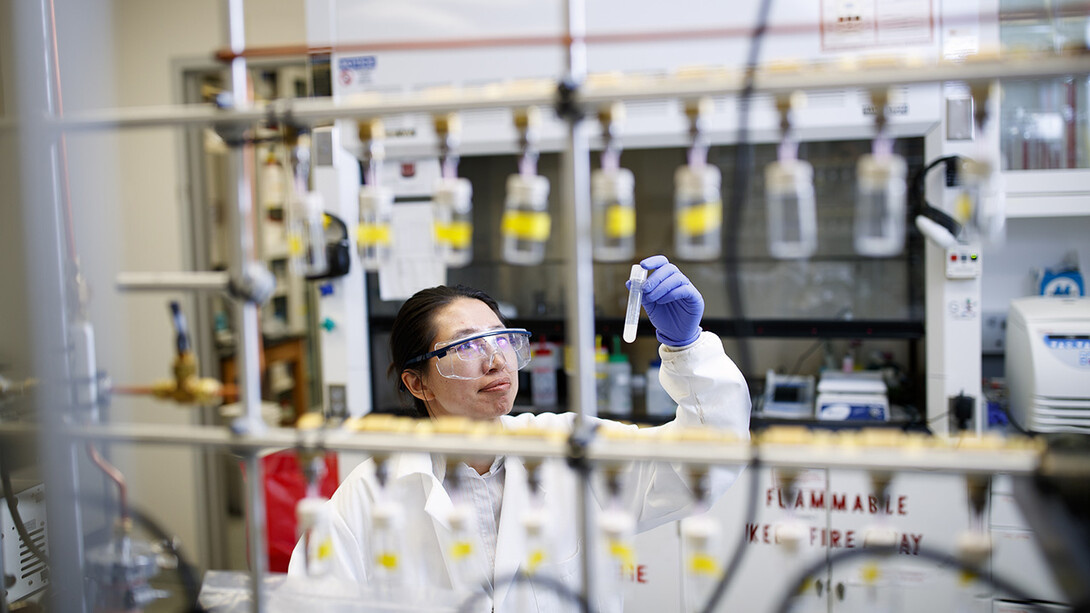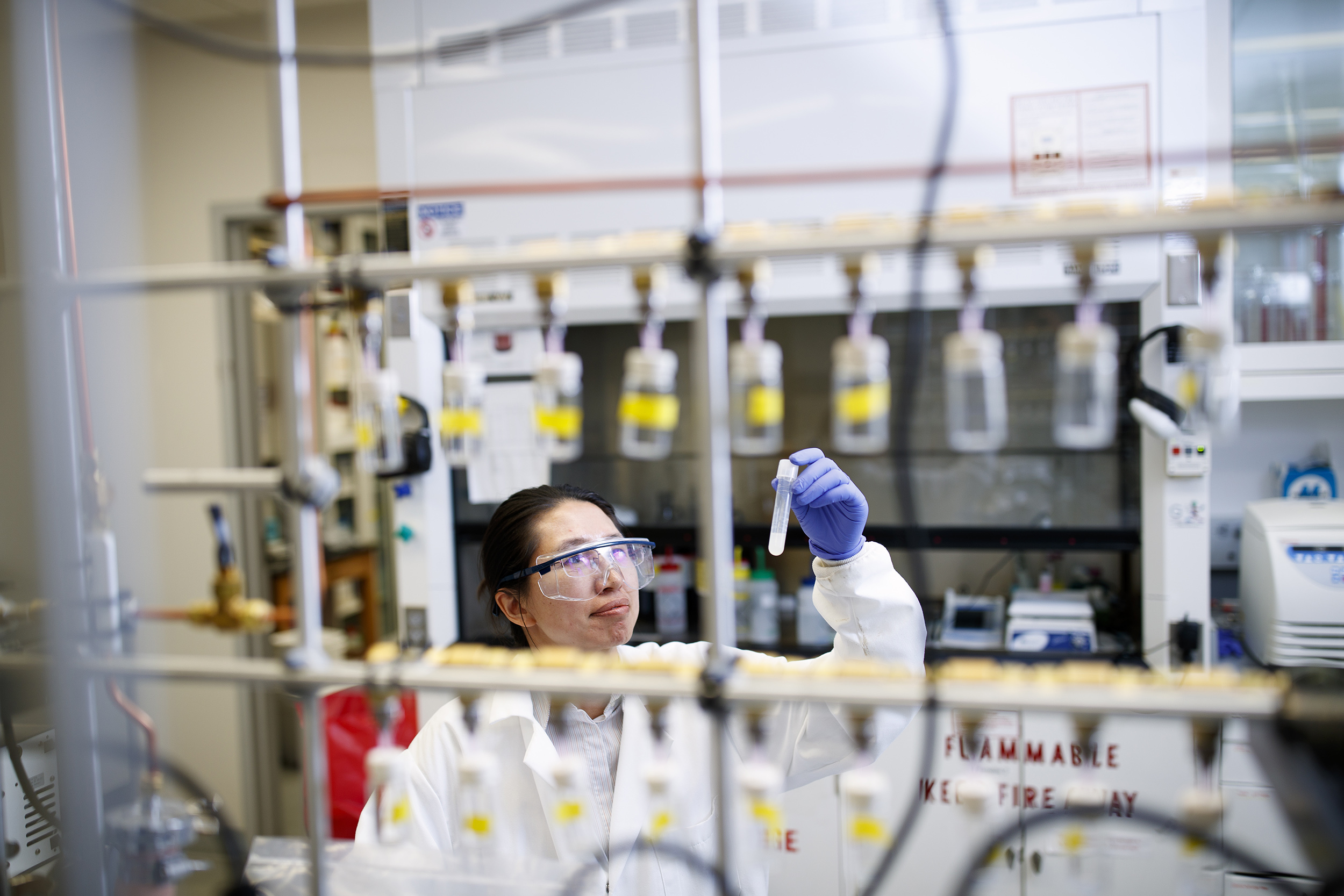
A University of Nebraska–Lincoln research team led by Limei Zhang, assistant professor of biochemistry, has been awarded a five-year, $1.8 million grant to study the novel mechanisms of iron-sulfur proteins that play multifaceted roles in stress response and antibiotic resistance.
The grant is a Maximizing Investigators’ Research Award through the National Institute of General Medical Services in the U.S. Department of Health and Human Services. MIRA supports early-stage investigators who study basic biological processes, as well as translational and clinical research in certain areas.
Zhang said her team’s structural and mechanistic investigations of iron-sulfur proteins will offer insights into how the sensitivity and reactivity of the iron-sulfur cluster is fine-tuned to allow living organisms to rapidly adapt to environmental cues. The team’s work also will offer more understanding about how cells meet the demands of biosynthesis and deliver and repair iron-sulfur clusters while avoiding damage that could be caused by uncontrolled iron-sulfur clusters.
“What we learn will be instrumental in the understanding of disease progression and the design of new therapeutic strategies against diverse pathogens,” Zhang said.
All iron-sulfur proteins contain one or more non-protein components, or cofactors, composed of multiple iron and sulfur ions. An important chemical property of iron-sulfur proteins is that both iron and sulfur ions in the cluster can readily exchange electrons with other molecules or ions, leading to a change in the cellular oxidation and reduction, or redox, environment, and thus a change in the protein’s shape and function.
Because of this, iron-sulfur proteins widely occur in all life forms to play multiple roles in sensing and balancing cellular redox status under both physiological and stress conditions. Maintenance of cellular redox status within a narrow range is required for normal functions of many proteins and for cell survival. Thus, iron-sulfur proteins involved in redox control are tightly linked to health and diseases such as cancer, diabetes and bacterial infection.
Despite their ubiquity and importance, the molecular mechanisms of iron-sulfur proteins remain poorly understood because of the challenges of working with these typically oxygen-sensitive and dynamic proteins.
By utilizing their expertise in the structural and spectroscopic characterization of oxygen-sensitive metal-binding proteins, Zhang’s team aims to fill critical gaps in understanding the structure-mechanism relationships of iron-sulfur proteins.
Zhang and her research team are affiliated with the Nebraska Center for Redox Biology and the Nebraska Center for Integrated Biomolecular Communication. The supports from these two National Institutes of Health-funded research centers played critical roles in the success of the grant application.
A number of current and former postdoctoral fellows and students in the Zhang team conducted the research that provided preliminary data for the grant, including Tao Wan, Shanren Li (currently an associate professor at Fujian Normal University), Daisy Guiza Beltran and Andrew Schacht (currently a doctoral candidate at the California Institute of Technology).








